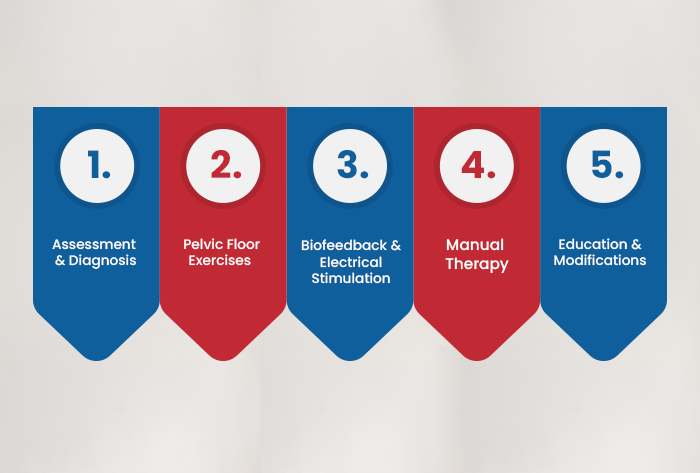The Role of Physiotherapy in Alleviating Women's Pelvic Floor Dysfunction

Many women around the world deal with a common issue called pelvic floor dysfunction, causing them discomfort and impacting their daily lives. The pelvic floor, a set of muscles supporting our pelvic organs, can weaken or not work well due to things like giving birth, getting older, or having an injury.
Luckily, physiotherapy is a helpful and non-invasive way to tackle and handle pelvic floor issues. If you're facing this problem, considering an online doctor consultation in India can be a convenient option to get professional advice and guidance.
This blog will explore the intricacies of Pelvic Floor Dysfunction and delve into how physiotherapy plays a crucial role in its treatment
Understanding Pelvic Floor Dysfunction
Before delving into the therapeutic aspects, it's crucial to comprehend the dynamics of pelvic floor dysfunction. This condition may manifest as urinary or faecal incontinence, pelvic pain, discomfort during intercourse, or even organ prolapse. Contributing factors include pregnancy and childbirth, hormonal changes, obesity, and the natural ageing process. The weakened pelvic floor muscles lose their ability to properly support the pelvic organs, leading to a range of issues.
The Role of Physiotherapy
- Assessment and Diagnosis
Physiotherapists play a pivotal role in assessing and diagnosing pelvic floor dysfunction. Through a comprehensive evaluation, they identify muscle weaknesses, imbalances, and coordination issues. This assessment allows for personalised treatment plans tailored to the specific needs of each individual.
- Pelvic Floor Exercises
One of the primary interventions in physiotherapy for pelvic floor dysfunction is targeted exercises, commonly known as Kegels. These exercises aim to strengthen the pelvic floor muscles, improving their tone and endurance. Physiotherapists guide patients in performing these exercises correctly, ensuring maximum effectiveness.
- Biofeedback and Electrical Stimulation
Physiotherapy often incorporates advanced techniques such as biofeedback and electrical stimulation. Biofeedback provides real-time information about muscle activity, helping patients understand and control their pelvic floor muscles better. Electrical stimulation, on the other hand, involves the use of low-level electrical currents to stimulate muscle contractions, aiding in muscle re-education and strengthening.
- Manual Therapy
Hands-on techniques, including manual therapy, are crucial components of physiotherapy for pelvic floor dysfunction. Therapists use gentle, targeted manipulations to release tension, improve flexibility, and address trigger points within the pelvic floor muscles. This can significantly alleviate pain and discomfort.

- Education and Lifestyle Modifications
Physiotherapy extends beyond the clinic as therapists educate patients about lifestyle modifications that can support pelvic floor health. This may include guidance on posture, dietary habits, and proper toileting techniques.
Wrapping Up
In conclusion, physiotherapy emerges as a beacon of hope for women grappling with pelvic floor dysfunction. The holistic approach, encompassing assessment, targeted exercises, advanced techniques, and lifestyle education, empowers women to regain control and enhance the function of their pelvic floor muscles. As a non-invasive and highly effective solution, physiotherapy offers a pathway to improved quality of life and renewed confidence for women experiencing pelvic floor dysfunction. Seeking the guidance of a skilled physiotherapist becomes a crucial step in this journey, unlocking the potential for relief and long-term pelvic floor health.